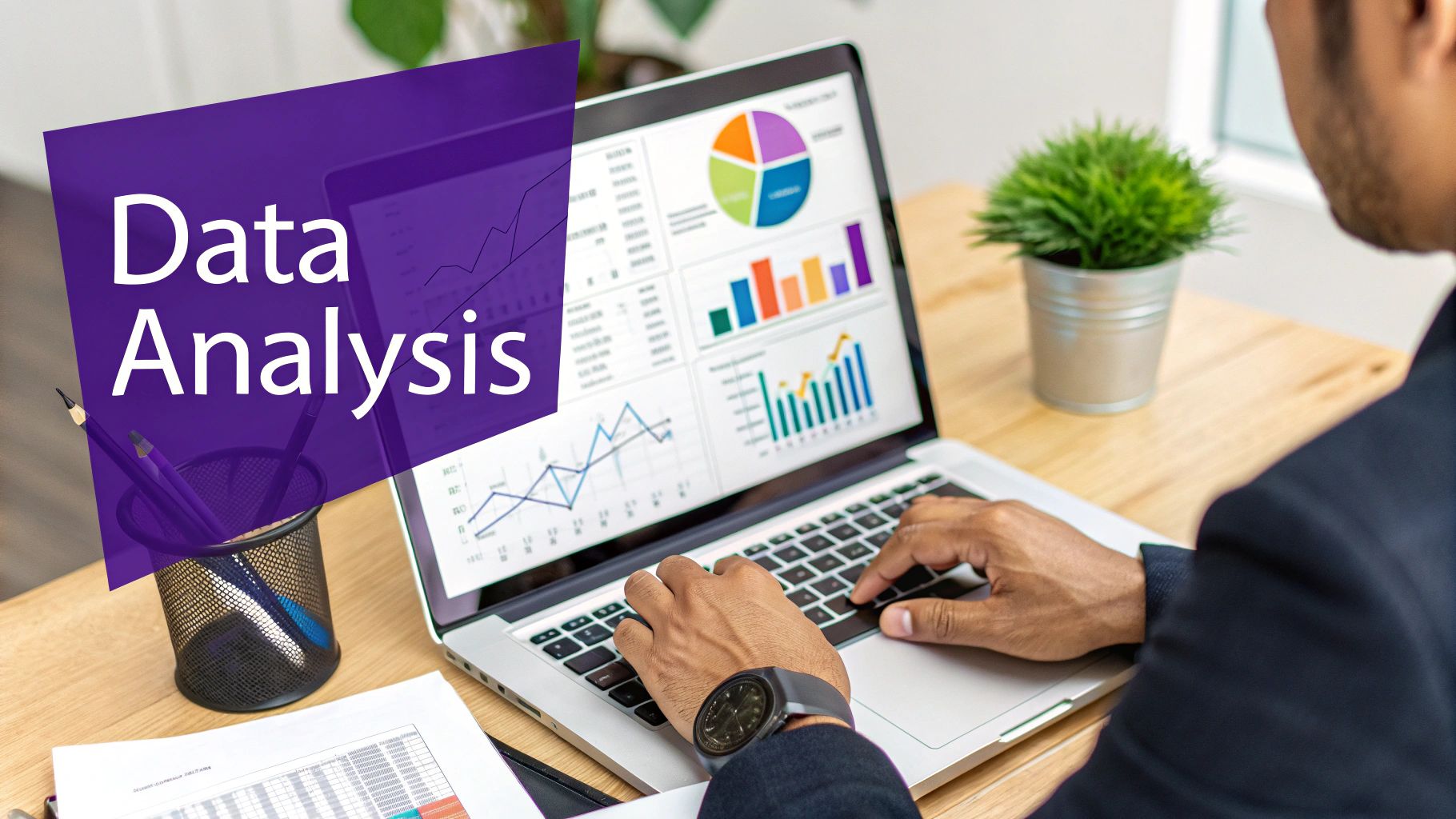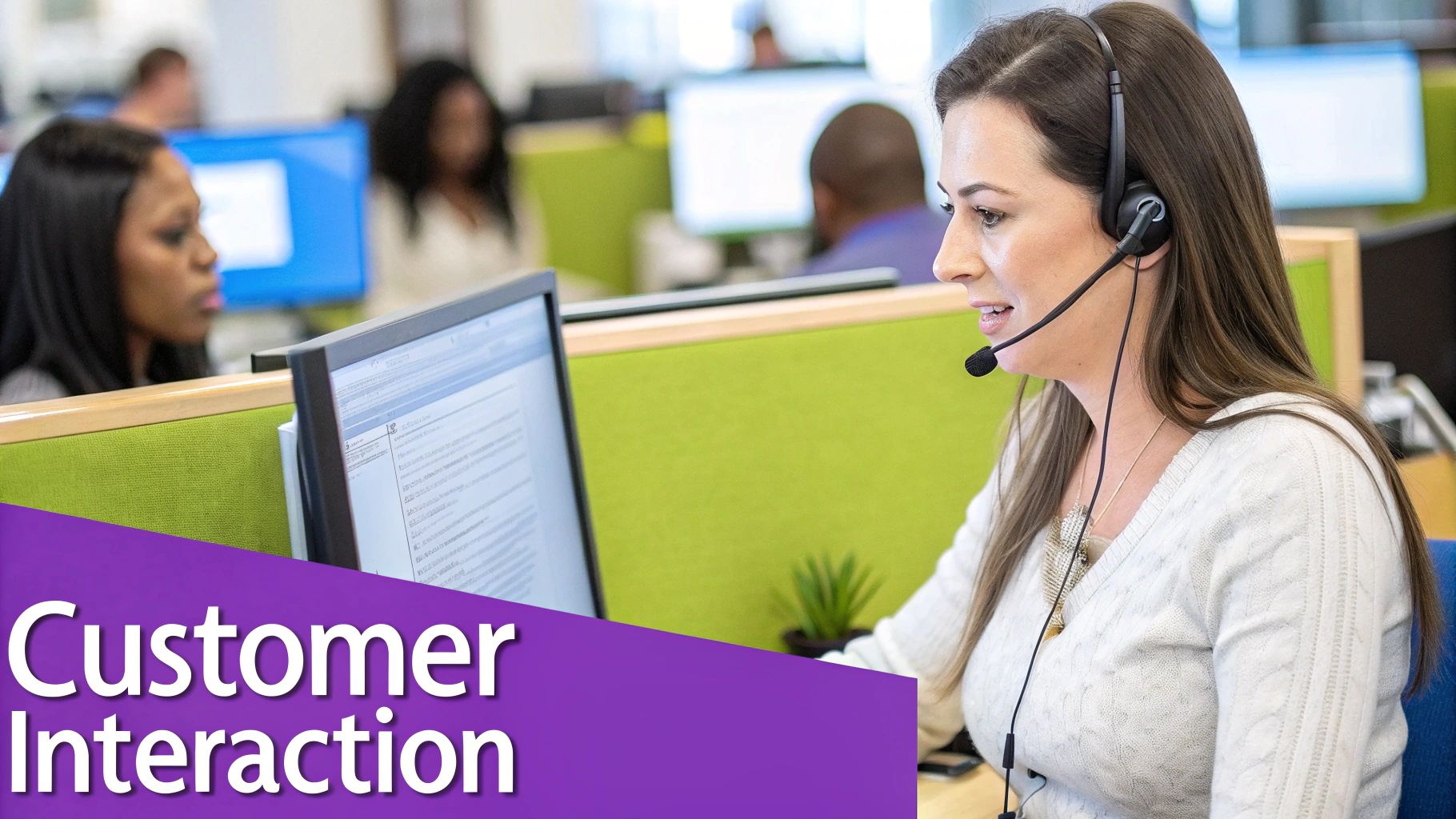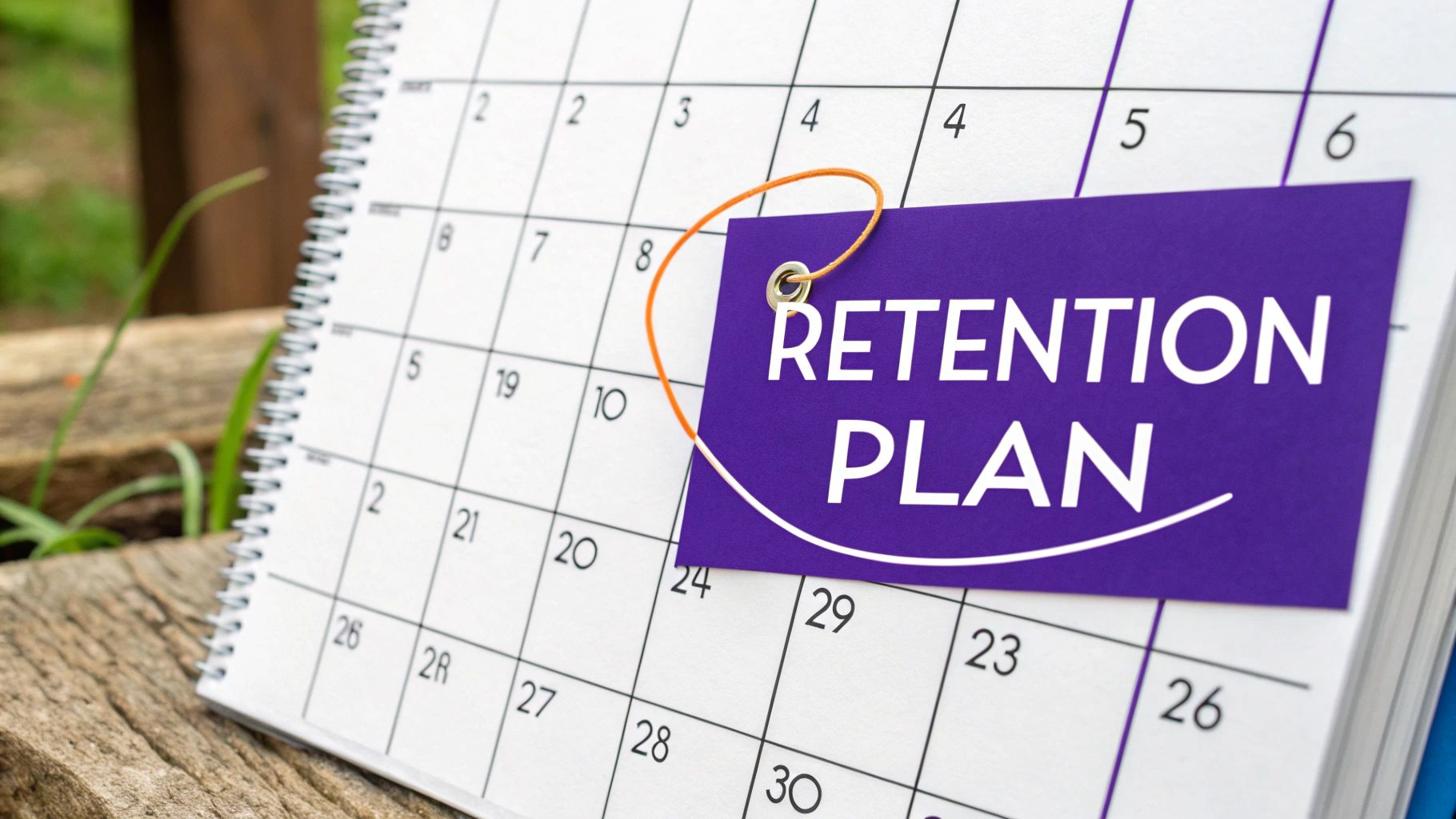The Ultimate Guide to Customer Lifetime Value Calculation: Essential Metrics That Transform Business Growth

Mastering the Core Principles of Customer Lifetime Value

Ever wonder what a customer is really worth to your business over time? That's where Customer Lifetime Value (CLV) comes in. It's not just another business metric - it shows you the total revenue you can expect from each customer relationship. Understanding CLV helps you make smarter choices about everything from marketing to product development.
Why CLV Matters
Getting a clear picture of CLV is crucial for growing your business the right way. When you know which customer groups bring in the most value, you can focus your marketing efforts where they count most. The best part? These insights help turn one-time shoppers into loyal fans who keep coming back. CLV also helps you spend your customer acquisition budget wisely by showing you exactly how much you can afford to spend to bring in new customers.
Key Components of CLV Calculation
Let's break down the key numbers that make up CLV. First, there's Average Order Value (AOV) - how much customers typically spend per purchase. Here's a real example: if Company A makes $1,000,000 in sales from 40,000 orders in a year, their AOV is $25 per order. This helps predict future revenue potential. Learn more about calculating AOV. Another important number is Purchase Frequency - how often customers come back to buy again. This tells you a lot about customer behavior and where you can improve engagement.
Building a CLV-Driven Business
Making CLV central to your business means seeing beyond single purchases to build lasting customer relationships. Here's how to make it happen:
- Personal Touch: Make each customer interaction feel unique and special
- Smart Rewards: Create loyalty programs that make customers excited to return
- Great Support: Solve problems quickly and go above and beyond expectations
- Keep Learning: Watch your CLV data and keep improving your approach
When you put CLV first, you're investing in relationships that help your business grow steadily over time. This leads to better profits, more repeat customers, and a stronger brand that people trust. Next up, we'll look at different ways to calculate CLV and help you pick the right method for your business.
Building Your CLV Calculation Framework
Working with Customer Lifetime Value (CLV) becomes much simpler when you break it down into clear, manageable parts. By focusing on key numbers like how often customers buy, how long they stay with you, and how much they spend, you can build a reliable way to measure your customer value. Let's walk through how to create your own CLV framework.
Essential Metrics for CLV Calculation
Three core numbers form the foundation of any good CLV calculation. Average Order Value (AOV) shows you the typical amount customers spend each time they buy. Purchase Frequency tells you how often customers come back to make new purchases. Customer Lifespan measures how long customers typically stay active with your business. Together, these numbers give you the full picture of customer value over time.
Practical Examples and Expert Insights
Here's a simple example to show how these numbers work together. Think of a customer who spends $50 per order, makes purchases twice yearly, and stays with your business for five years. Their CLV would be $50 * 2 * 5 = $500. Let's look at a real-world case: At Starbucks, customers spend about $5.90 per visit and come in 4.2 times weekly, making their weekly value $24.78. With customers staying for an average of 10 years (or 520 weeks), their CLV reaches $12,889.60. Want to dive deeper into CLV calculations? Check out this helpful guide from HubSpot.
Overcoming Data Collection Challenges
Getting good data isn't always easy. Many businesses find it hard to track everything consistently. Using solid tracking tools like those from Wand Websites can help solve these problems. For example, connecting your online store with good analytics tools lets you automatically track purchase amounts and buying patterns.
Ensuring Data Accuracy and Scalability
Good data is key to getting CLV right. Check your tracking methods often to make sure they're working well. Also, plan for growth - as you get more customers, you'll have more data to handle. Your system needs to keep up without losing accuracy. Wand Websites offers tools that grow with your business, helping you collect good data without technical headaches so you can focus on using what you learn.
Choosing Between Historical and Predictive CLV Models

Figuring out Customer Lifetime Value (CLV) can be tricky since there's more than one way to do it. Let's explore the two main approaches - historical and predictive models - to help you pick what works best for your business.
Understanding Historical CLV Models
Think of historical CLV models as looking through your business's photo album. These models analyze what your customers have already done and spent with your company. By examining real transaction data, you can spot patterns and identify your most valuable customers. This helps you focus your attention and resources on keeping your best customers happy.
Here's a real-world example: A software company looks at their data and sees customers typically buy $200 licenses yearly and stick around for 3 years. This means each customer is worth $600 over time. The historical approach makes it easy to see which marketing efforts worked well and which customer groups bring in the most revenue. Want to learn more about calculating CLV? Check out Storyly's detailed guide.
Exploring Predictive CLV Models
While historical models show you where you've been, predictive models help you see where you're going. These models use smart statistics to forecast how much value customers might bring in the future. They look at things like past purchases, customer details, and how people interact with your business to make educated guesses about future spending.
This forward-looking view helps you make smarter decisions about where to invest your marketing budget. For example, you might discover certain types of customers are likely to spend more over time, so you can focus on finding more customers like them. You can also spot early warning signs that customers might leave, giving you a chance to keep them around.
Combining Historical and Predictive Approaches
Many smart businesses use both types of models together. It's like having both a rearview mirror and a GPS - you can see where you've been and where you're heading. This complete view helps you make better choices about growing your business both now and in the future.
For instance, you might use historical data to understand which marketing campaigns worked best for your high-value customers, then use predictive modeling to find similar potential customers to target next.
Choosing the Right Model for Your Business
Picking the right CLV model depends on what data you have and what you want to achieve. If you're just starting out, a simple historical model might be perfect. As you collect more data, you can start using more advanced predictive models.
No matter which approach you choose, having the right tools makes a big difference. Good data tracking helps you understand your customers better and make choices that help your business grow. The key is starting somewhere and building up your understanding over time.
Remember, the goal isn't perfection - it's getting useful insights that help you serve your customers better and grow your business steadily.
Implementing Advanced Customer Segmentation for CLV
Breaking down your customer base into clear, well-defined segments is key for calculating customer lifetime value accurately. By looking closely at different customer groups and their specific traits, you can better understand how valuable each segment is to your business and adapt your approach accordingly.
Identifying High-Value Customer Segments
One of the main goals is finding your best customers - the ones who generate the most revenue over time through repeat purchases and loyalty. Once you know who these valuable customers are, you can focus on keeping them happy with special perks, personalized product suggestions, and top-notch customer service.
Data-Driven Segmentation Strategies
Good segmentation needs solid data about how customers behave, who they are, what they buy, and how they interact with your business online. Wand Websites and similar tools help collect and organize this information so you can create customer segments that grow and change with your business.
Here are key ways to segment your customers:
- Purchase frequency: Who buys often vs. rarely
- Average order value: Big spenders vs. small purchasers
- Product preferences: What types of items different groups tend to buy
- Engagement levels: Who interacts most with your brand through social media and email
Personalized Experiences for Each Segment
After identifying your key customer groups, create experiences that match what each segment wants and needs. For example, your high-value customers might love getting early access to new products or exclusive deals. This personal touch builds stronger relationships and encourages more purchases over time, increasing CLV. For real-world impact, consider a software company that found their premium customers spend $1,000 every 6 months on average. With typical 5-year customer relationships, that's a $10,000 lifetime value. Learn more about CLV examples on WiserNotify's blog.
Measuring the Impact of Segmentation
Keep track of how your segmentation efforts affect CLV by monitoring key numbers like customer retention, order sizes, and purchase frequency for each group. This helps show if your approach is working and where you can improve. Try A/B testing different segmentation strategies to find what works best for growing long-term customer value.
Turning CLV Insights Into Revenue Growth

Understanding Customer Lifetime Value (CLV) goes beyond basic number crunching - it's about finding real opportunities for steady business growth. When you know how to put CLV data to work, you can improve everything from your marketing efforts to customer service and product development.
Making Smart Marketing Decisions with CLV
CLV helps you target your marketing budget more effectively by showing which customer groups bring in the most value. Instead of spreading your marketing budget thin, you can focus on attracting and keeping your most profitable customers. CLV data also helps set realistic budgets for getting new customers, so you don't overspend on acquisition.
Building Better Customer Experiences
Happy customers tend to stick around longer and spend more. By looking at CLV patterns, you can spot areas where customer experience needs work. This could mean adding personal touches to your service, creating special perks for your best customers, or stepping up your support game. Wand Websites provides features to help track how customers interact with your business, making it easier to spot ways to improve their experience and boost CLV.
Using CLV to Guide Product Development
CLV data shows you which products your best customers love most. For example, if your high-value customers really like a certain product line, it makes sense to expand it or create related items. This way, you're building products that match what your most valuable customers actually want.
Practical Steps to Put CLV Data to Work
Here's how to turn CLV insights into real business improvements:
- Set clear goals: Pick specific targets like improving customer retention by X% or increasing average purchase size
- Get everyone on board: Make sure all teams understand why CLV matters and how their work affects it
- Create plans for different customer groups: Build specific marketing campaigns and service approaches for each customer segment
- Keep track of progress: Watch your key numbers closely to see what's working and what needs to change
When you make CLV central to your business decisions, you'll likely see better profits and stronger customer loyalty. Remember - this isn't a one-time fix but an ongoing process of learning from your customers and making things better for them.
"Navigating Common CLV Calculation Challenges"
Navigating Common CLV Calculation Challenges

Getting customer lifetime value (CLV) calculations right is essential for your business, but it comes with several challenges. Let's explore the common issues you might face and practical ways to overcome them.
Data Quality and Consistency Issues
Poor data quality can throw off your CLV calculations significantly. Missing purchase records or inconsistent customer lifespan tracking can lead to inaccurate results. For example, if you're missing sales data for some customers, you'll end up with wrong average order values and unreliable CLV estimates.
Here's how to maintain good data quality:
- Set Clear Data Standards: Create simple guidelines and use tools to keep data consistent
- Check Data Regularly: Look for and fix errors in your data monthly
- Connect Your Data Sources: Bring together information from all your business tools
Dealing With Changing Customer Behavior
Your customers' buying habits change over time. What worked last year might not work today. For instance, if a competitor runs a big sale, you might see more customers leave than usual, affecting your CLV predictions.
Try these approaches to stay on top of changes:
- Watch Your Numbers: Keep an eye on how often customers buy, how much they spend, and how many stop buying
- Ask Your Customers: Get direct feedback about what they want and need
- Update Your Models: Use methods that can handle new data and trends
Adapting Calculation Methods as Your Business Evolves
As your business grows, your CLV calculations need to grow too. A simple method might work when you're starting, but you'll need more detailed analysis as you expand. For example, you might need to look at CLV for different customer groups separately.
Here's how to keep your methods current:
- Review Your Approach: Check if your current calculations still make sense for your business
- Try New Methods: Look into better ways to predict customer value
- Use Good Tools: Consider software like Wand Websites to help with calculations
Addressing the Complexity of Multi-Channel Attribution
Customers interact with your business in many ways - through your website, social media, emails, and physical stores. It's tricky to track which channels lead to sales. A customer might find you on Instagram but buy in your store.
Here's how to handle multiple channels:
- Track All Touchpoints: Use methods that consider every way customers interact with you
- Use Good Analytics: Pick tools that can follow customers across different channels
- Bring Data Together: Combine information from all channels to see the full picture
By understanding these challenges and using these solutions, you can keep your CLV calculations accurate and helpful for making business decisions. This helps you focus on getting and keeping valuable customers while growing your business sustainably.
Want to turn your Etsy shop into something bigger? Wand Websites can help design your website and create strategies to increase your customer lifetime value. Let's work together!


